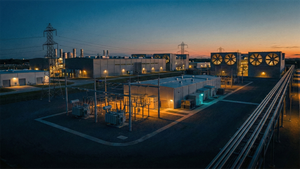
Iyassu Essayas is the CEO and Founder of Inflows, a professional networking platform designed for Registered Investment Advisors. He also serves as vice chair of the board of US SIF, The Forum for Sustainable and Responsible Investment.
In this candid conversation with Equities.com’s Paula DeLaurentis, Essayas discusses the opportunities and challenges facing the sustainable investing space. From regulations and social media campaigns to the mindset shifts that will best equip wealth managers to serve new generations of investors, Essayas gives insight into the past, present and future of sustainable investing.
The interview has been edited for length and clarity.
Paula DeLaurentis: How would you describe your overall mindset regarding sustainable and impact investing in today’s market environment?
Iyassu Essayas: I’m hopeful, but with a dose of reality. We have some of the best and brightest at our firms in the sustainable investing space, but the current administration and certain state attorney generals have put a chilling effect on sustainable investing, particularly on the public equity side for asset managers. With certain actions, certain black lists and subpoenas, we’re not working in the friendliest of environments.
PD: What trends or shifts have you noticed with investors at this time?
IE: Investors are starting to question where their money’s at, what kind of funds they’re in and, if they do have some type of sustainability angle, what is it? How do you prove it? It’s not just window dressing or ‘greenwashing’ as some folks would call it.
You have a lot of social media campaigns out there putting a negative light on this, which brings these discussions to financial advisors. Some of these financial advisors and wealth managers are also starting to question the commitments that asset managers have to their sustainability practices.
PD: How about next generation investors, such as millennials and women?
IE: It’s really interesting. Millennials and women are set to inherit a lot of money. By 2030 women are going to control $34 trillion of wealth in the United States. They’re starting to ask questions, and the advisors and wealth managers are starting to realize that they need to be prepared for this wealth transfer.
The previous generations have a certain way of working with investors, but the new generations are much more interested in the environmental and human capital impacts their investments have. As a middle person, you’d better have a good answer when this wealth transfer happens in order to satisfy that client.
Some are starting to figure it out. They’re joining network organizations to get advice on how to handle these types of new inquiries and to learn what’s out there, what’s available and how to provide these options to clients.
PD: I think with next gen women in particular the conversation isn’t typical. Up until now there have been typical sustainable advisors who are ESG and built ESG only portfolios, but I see that subset of advisors and clients now questioning the data that supports the sustainability practices they’re being told.
Also, women and next gen are asking these questions, but they don’t have to be in a 100% ESG portfolio, right? They want to be in investments that interest them, that may make an impact here or there, and I think that’s where the advisors today are struggling. How do you have that authentic conversation?
And they may not be specialists, so to your point, they’re joining other organizations to learn how to manage these portfolios. But I think that the comfort level may not be there yet.
IE: Yes. One of the big, mega trends is personalization. It’s a commercial imperative for these advisory practices to be able to personalize the solutions to their end client. If they don’t, then the young kid who doesn’t have that 25-year relationship with you is just going to find an advisor who can provide those types of solutions and answers.
It’s become a business decision to figure out how to provide sustainability solutions to clients that may not be 100% of the portfolio but satisfies the clients. It’s challenging.
PD: What excites you most about the current state or future of sustainable investing?
IE: I have been in this space long enough to see this shift from sustainable investing being a sort of, ‘What is that? What are you doing over there? What does ESG mean? What does SRI mean to a conversation at the dinner table?’ To President Biden using those three letters ES and G. Now the whole nation knows about it, and that gets me excited. It’s the biggest marketing campaign I’ve ever seen in my career.
PD: And what is the flip side? What are the biggest challenges that you see facing sustainable investing?
IE: Being in a regulated industry, regulations are always the biggest concern. For the end client — the mom and pops who are just trying to save up for their kids’ college fund or retirement — you may see a chilling in the number and types of products and solutions that are being offered in the United States because of the regulatory pushback.
Then you look across the ocean and you see Europe going full on with a lot of amazing solutions for climate and human capital and human rights that you may not be able to participate in.
PD: In terms of financial advisors being the gatekeepers, how would you describe the current relationship between the advisor and the sustainable investment provider?
IE: Financial advisors are starting to look at asset management as a commodity. Asset managers have to really differentiate themselves. By being authentic about the solutions you’re providing you can build a tighter relationship with that advisor.
On the service provider side, a lot of financial advisors are entrepreneurs and small businesses just trying to get by. The more time you can help them spend with their clients and get them off of the operational — whether it’s note taking or searching for sustainability solutions that are out there — the tighter relationship you can build with that financial advisor.
I see the industry really shifting towards catering to the advisors and wealth managers to help make them efficient, whether it’s artificial intelligence or software solutions.
PD: What are you most excited about for the next six to 12 months?
IE: My background is asset management, so I care a lot about the flows. We’ve had some outflows, and I’m wondering if it really is because of the social media pushback and the state attorney generals and whatnot. I think it’s actually much more complicated.
In the ESG space, a lot of the historic funds that provided these types of solutions were in mutual funds, which are kind of an old school way of creating an investment vehicle. ETFs are now the go-to. We’re starting to see some of the historical ESG asset managers start to create actively managed ETF funds that mimic their original mutual funds.
And so the whole notion that ESG is out of favor, and folks are pulling their money out, I don’t know. I’m not very convinced that’s the case. I think it may be something a little bit more mechanical than it is about sentiment.





